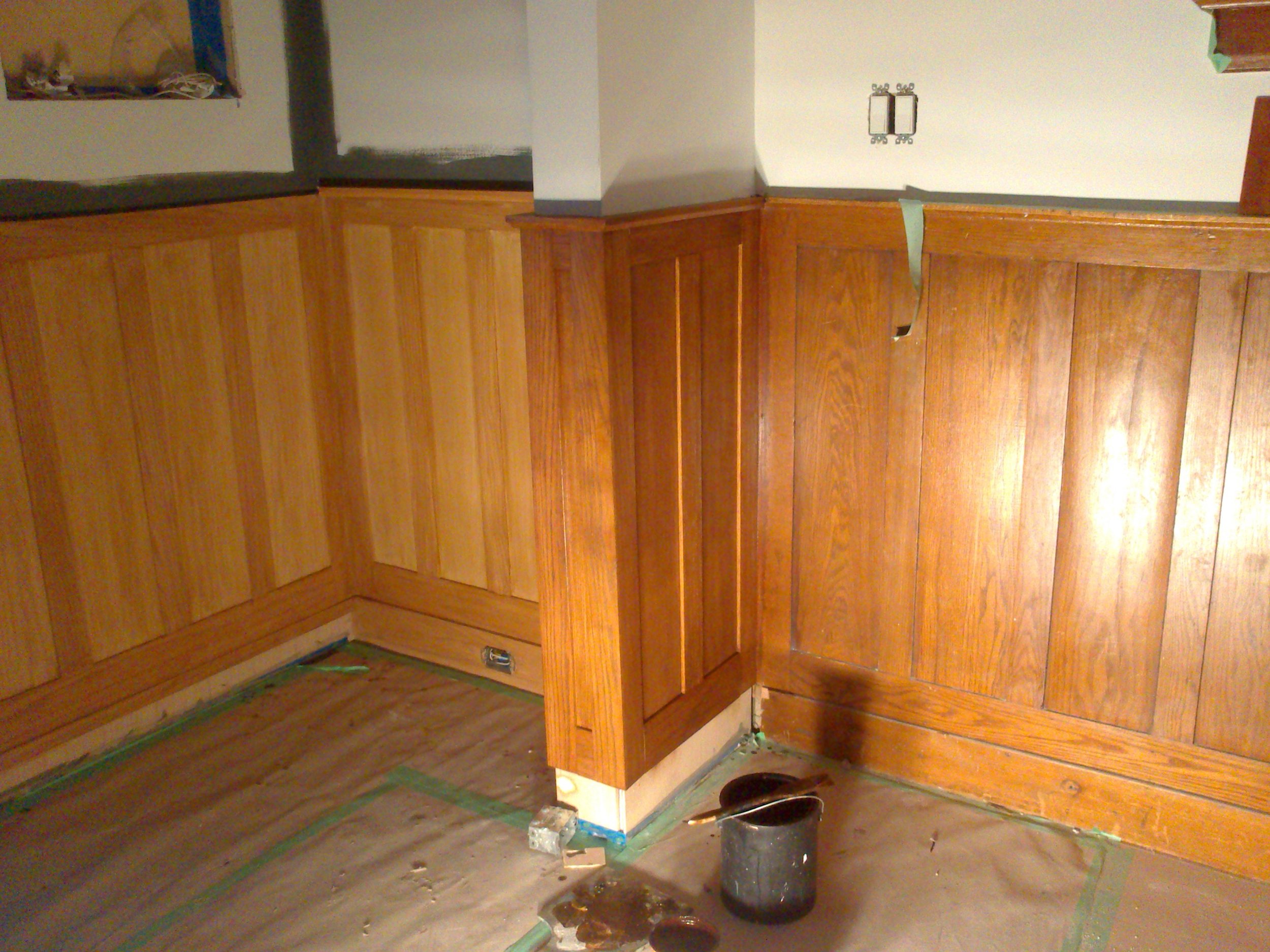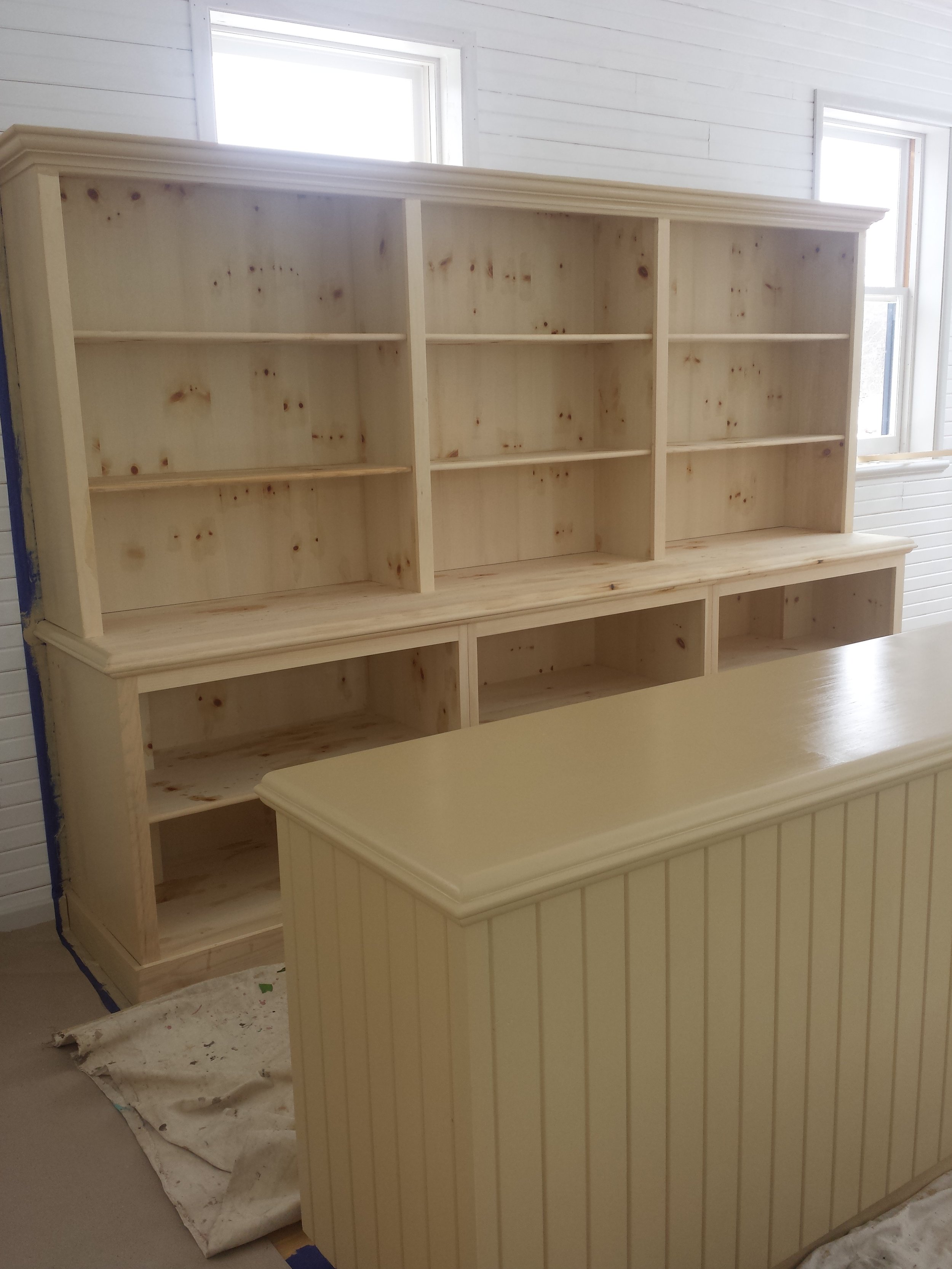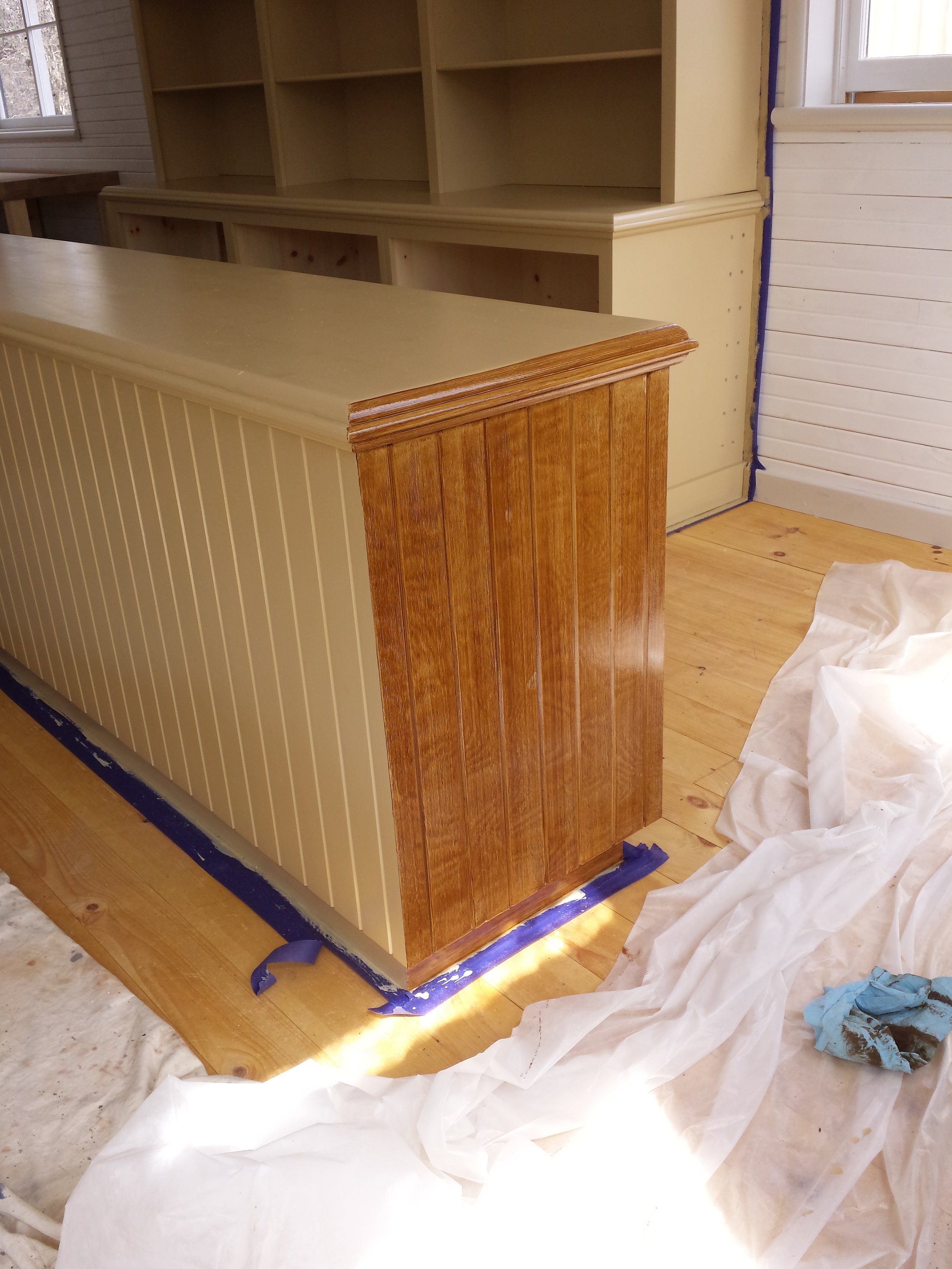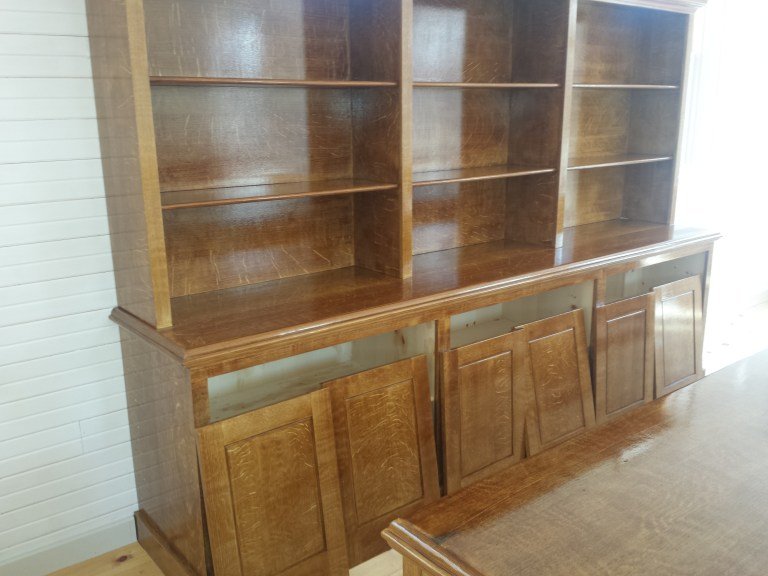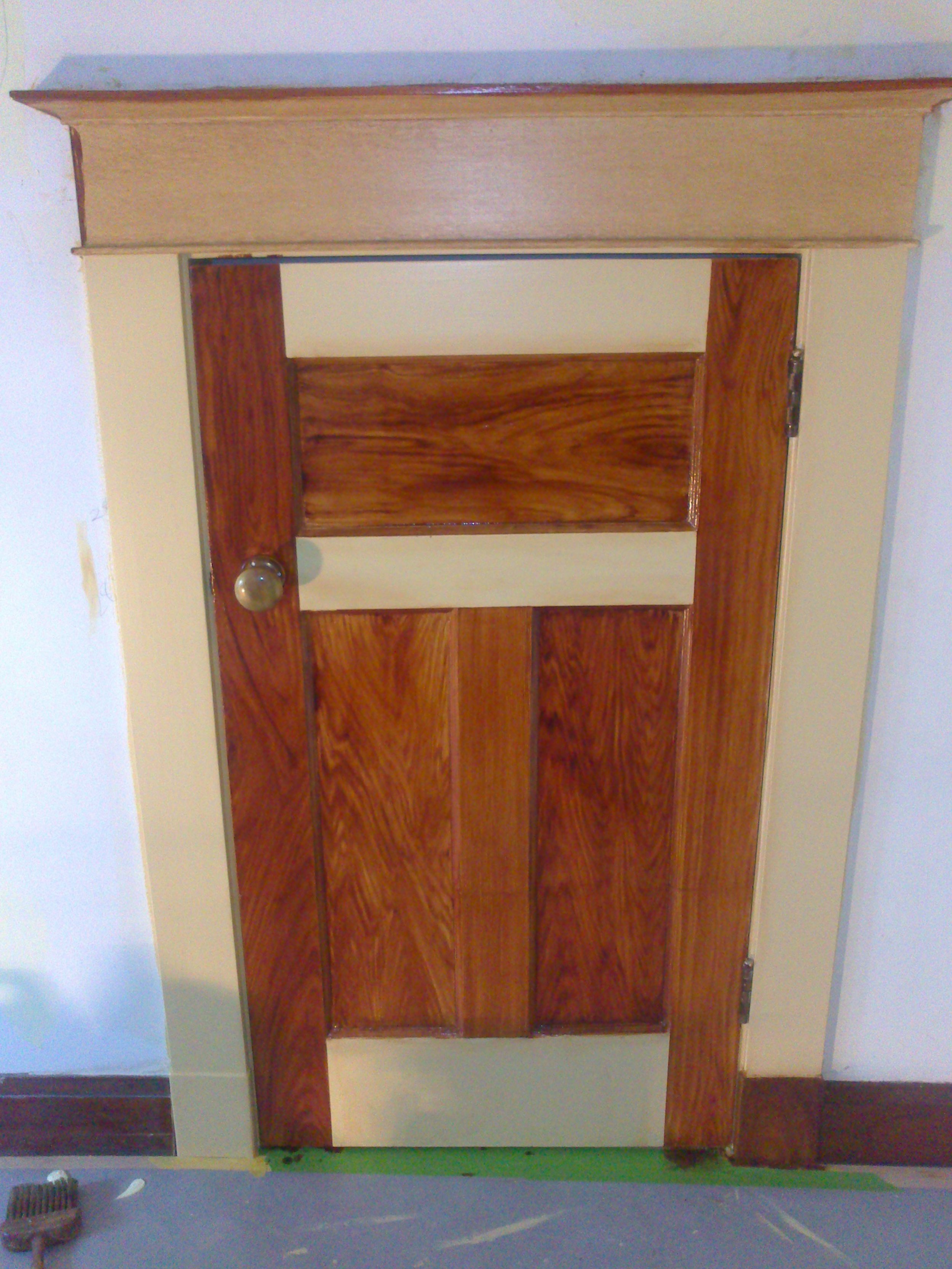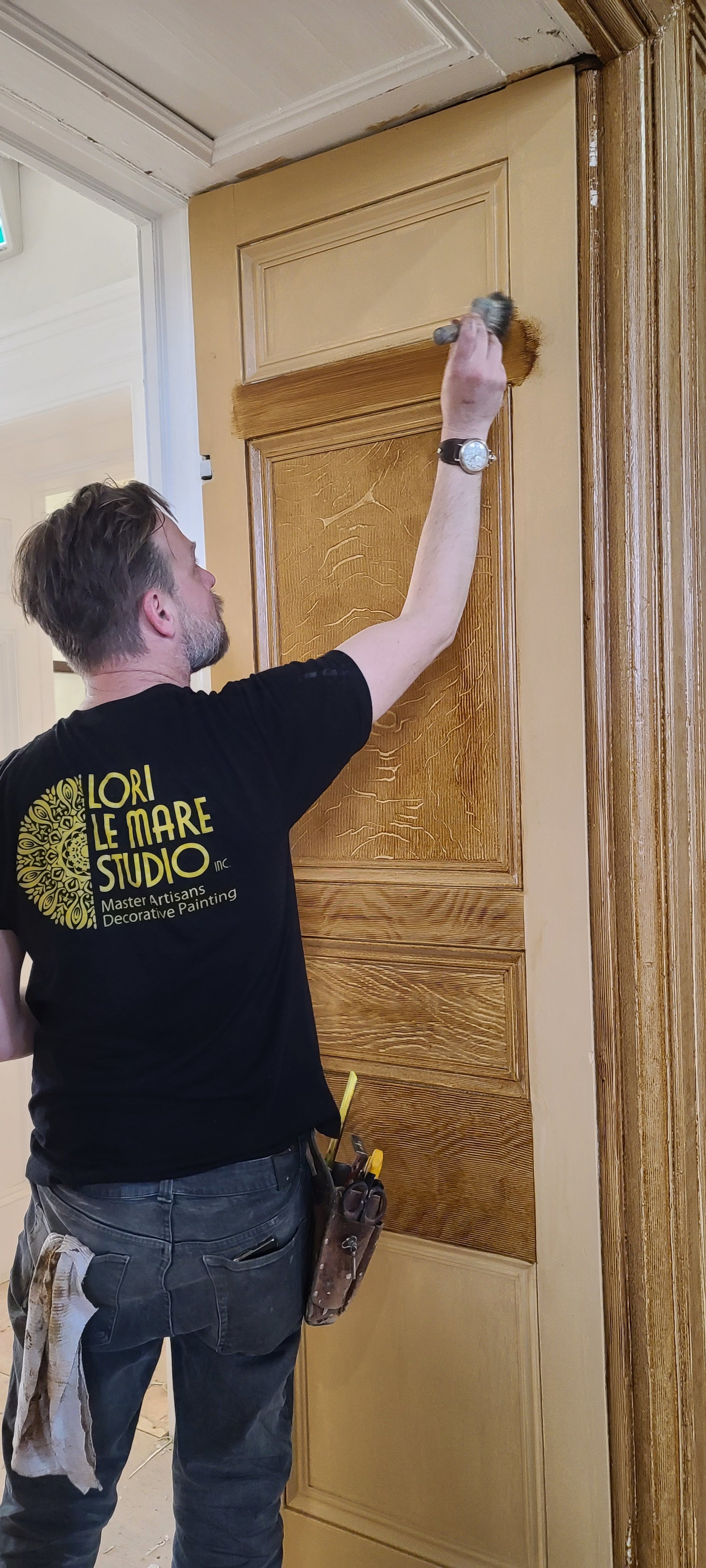The technique of Faux Wood Graining in Historic Restoration
Lori LeMare at her Restoration Project in the Colonial Building, Newfoundland
Faux Wood Graining
Step into the grandeur of historic architectural marvels, and you will witness an aura of artful craftsmanship that time has, in many instances, eroded. As much as we adore the past, preserving it in our modern world can be challenging - especially when it comes to painted surfaces. However, tapping into the knowledge of the old masters and teaching a younger generation the time-worn techniques, will help with the continuation of preserving these surfaces. Restoring the glory of these antiquated structures is what we will focus on in this blog post. We'll delve into the fascinating realm of preserving heritage painted surfaces in particular faux wood graining and explore how they're being used today.
Introduction to Wood Graining (Faux Bois)
Wood graining or faux bois as it’s also known, is a craft that has been around for centuries. It is a way to apply paint to surfaces such as walls, furniture, and floors to create the look of real wood. Wood graining is an important skill to master if you are delving into historic decorative paint restoration. Many features in heritage manor homes and historic government buildings feature surfaces built with relatively cheap wood and painted over to look like rare and expensive wood. What was plentiful in the area would determine the wood used and in many cases in North America that wood is pine. This surface would then be painted to look like expensive cuts of rare wood.
When creating a wood grained finish, it is important to understand the fundamentals of glazing, combing and stippling as these are required skills for achieving the right textures. In addition, preparation is essential for ensuring that your finished product looks natural and professional. You will need to use proper primers and sealants that work best with your chosen paint product in order to guarantee the desired outcome. From there you will want to carefully choose colors that match the original wood to ensure the final effect looks cohesive.
History of Wood Graining Techniques
The earliest known use of wood graining dates back to ancient Egypt, where craftsmen used special tools to create decorative patterns on coffins and other objects.
Canada’s Parliament Building
The art of wood graining reached its peak during the 18th and 19th centuries in Europe and America. Some of the most famous examples of wood grained surfaces can be found in North American homes built during this period, including the White House, Buckingham Palace and Canada’ s Parliament Buildings.
Today, wood graining is still used occasionally for historic preservation projects or for creating a unique design element in a home or commercial space. There are several different techniques that can be used to achieve the desired results, and with practice, anyone can learn how to grain wood like a pro!
Overview of Faux Wood Graining
Faux wood graining is a technique used to create the appearance of wood grain on surfaces that are not actually made of wood. This can be done for aesthetic or functional purposes, such as preserving the look of an old piece of furniture or making a non-wood surface more resistant to wear and tear.
There are a few different methods that can be used to achieve the desired effect, but all involve applying a paint (usually a translucent glaze) to the surface in such a way that it simulates the look of real wood grain. The most common method is known as straight graining, which involves using two different sized steel combs to texture the glaze in long, parallel strokes. Other methods include ‘wiping out’ (a method to add the figuring seen in quarter sawn oak) and heart graining, which is produced using a specific ‘cutter’ and ‘mottler’ brush and various methods of manipulating the glaze by hand.
Once the faux wood graining has been applied, it will need to be sealed in order to protect it from damage and wear. This can be done with a clear coat of varnish or polyurethane, which will also help to enhance the realism of the grain pattern.
WHY WAS IT USED IN HISTORIC BUILDINGS?
Faux wood graining has been used in historic interior design for centuries because it is an effective way to replicate the look of real wood without having to use actual wood. It is a relatively inexpensive way to achieve a high level of detail and realism. Highly skilled artisans were employed extensively to recreate these ornate finishes to add grandeur to a room.
Methods and Materials Needed
To achieve a believable wood grain finish, you will need to start with a smooth surface. This can be achieved by sanding and applying an appropriate primer.. Once the surface is prepped, you will need to choose your paint colors. A light color for the base coat and a darker coloured glaze for the middle and top coat will create a realistic wood grain effect.
Next, you will need to create your faux wood grain tool. This can be done with a small piece of sponge or old stiff brush. Roll on the dark glaze colour and drag the brush or sponge through the wet glaze. Vary the pressure and direction of your strokes to create different effects. Once you are happy with the overall look, allow the paint to dry completely. Brush or roll on the same coloured glaze but thin it with more glaze to make a weaker colour. While wet, ‘mottle’ the surface by dragging and pouncing a piece of damp leather through it.
Now it's time to add some finishing touches! Use a fine-tipped brush to add some variation in the paint colors. You can also add some shadowing around the edges of each stroke for added realism. Allow everything to dry completely before enjoying your new wood grain finish!
Different Types of Faux Wood Graining Techniques
If you're considering replicating a heritage faux bois finish, here are a few tips to help you get started:
1. Choose the mediums for the job. When it comes to faux wood graining, having the right tools and mediums can make all the difference. Start with a slow drying waterborne glaze and super saturated colourants. Research wood and use the correct coloured glazes or stains to create the illusion of depth.
2. Practice makes perfect. As with anything, extensive practice is required when it comes to faux wood graining. You will need to study the texture and grain in real wood and practice simulating this. Try out your technique on a prepared sample board before beginning your project. This will help you get a feel for how much pressure to apply and how to create different grain patterns.
3. Work in sections. When applying faux wood grain, it's best to work in small sections so that the glaze doesn't have a chance to dry before you've had a chance to finish your design. This is especially important if you're working with multiple colors. Tape off areas in the shape and size of real wood installation. Manipulate every other area. When dry, remove tape and work on adjacent areas.
4. Use the right tools. Proper wood graining brushes bought from a reputable dealer is essential. You can also make your own tools by using old stiff brushes and cutting out hairs in various patterns from old brushes. You can also cut rubber to resemble the steel combs used in traditional graining methods.
By following these tips, you'll be well on your way to creating beautiful, realistic-looking faux wood grain that will last for years to come!
Conclusion
It is essential to know faux wood graining techniques to restore and replicate the original heritage finishes found in historic restoration and preservation. Faux wood grain is also used in contemporary interiors in areas where either real wood could not be used or where a more expensive wood is desired but not attainable. With proper techniques and practice, successful graining will fool even the most fastidious observer into thinking it real.
If they don’t notice your work, you’ve succeeded!



